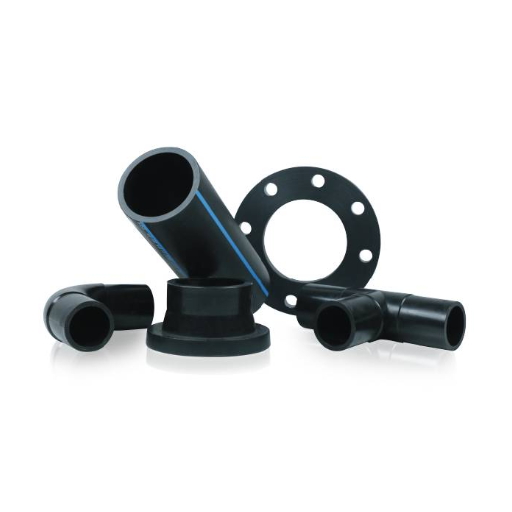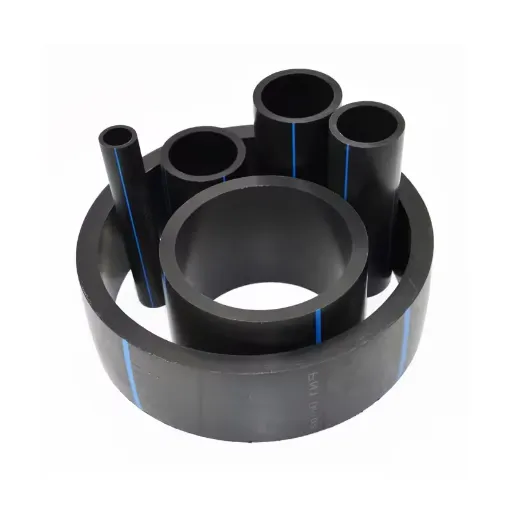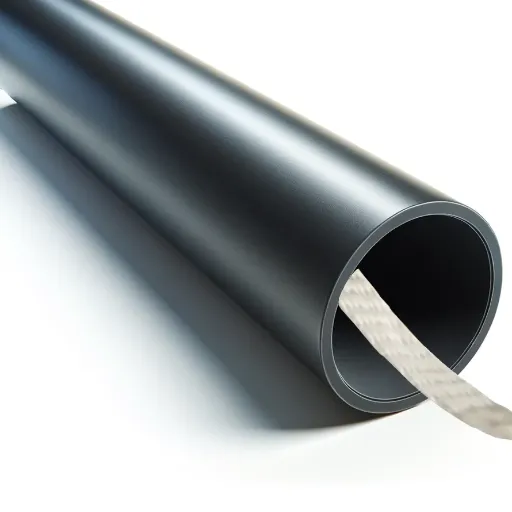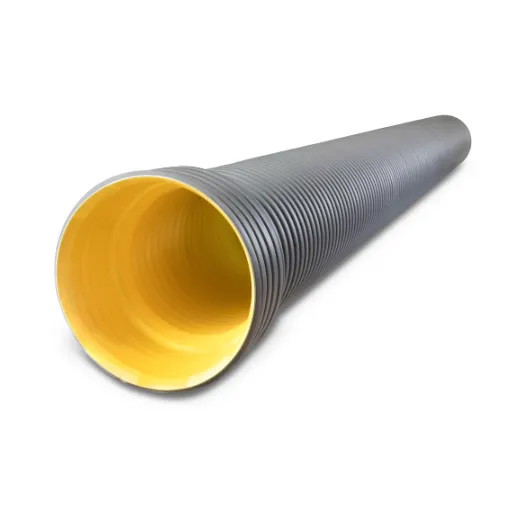High-density polyethylene (HDPE) pipes have become a leading choice in various industries due to their exceptional durability, flexibility, and resistance to corrosion. However, understanding the proper methods for connecting HDPE pipes is critical to ensuring long-lasting and efficient performance in any application. This guide aims to provide a comprehensive overview of the various techniques available for joining HDPE pipes, highlighting their advantages, limitations, and practical applications. Whether you’re working on water distribution systems, gas pipelines, or industrial fluid transport, this article will serve as a reliable resource to help you select the most suitable connection method to meet your project’s specific requirements. From butt fusion and electrofusion to mechanical joining techniques, we will explore each method in detail, equipping you with the knowledge to optimize HDPE pipe performance in any context.
How Do I Properly Prepare HDPE Pipe Surfaces Before Connection?
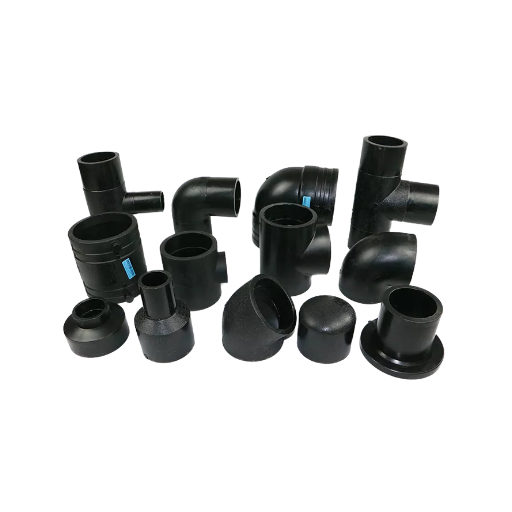
Cleaning and Preparing the Ends of the HDPE Pipes
To connect HDPE pipes, I am certain they will need reliable and robust joints. Therefore, I meticulously prepare the edges of the pipes as follows:
- Look for Damage at Pipe Ends: To begin with, I check the edges of the pipes for visible damage, distortion, or some form of contamination. Any of these irregularities can hamper the joint integrity, and they will need to be fixed before I proceed further.
- Lengthwise Cut Circumference of the Pipe: In case something needs to be changed, I take a sharp and suited cutting item, such as a rotary pipe cutter, to cut the pipe cleanly and to a square shape. If I fail to do so, unaligned joins could misalignment during the combining process.
- Dirt and Surface Residue Removal: In order to wipe the ends of the pipes, a clean and dry cloth will suffice. However, for any stubborn stuck contaminants, I make sure I applying a cleansing solution composed of isopropyl alcohol. After this, I ensure I leave the surface dry and free so that I can continue working further.
- Measure and Fusion Zone Marking: When I need to do butt fusion or electrofusion, I keep a measuring tape at hand and mark the end points on each pipe.
- Scrape the Oxidation Layer: I prepare the area around the fusion zone by using a pipe scraper tool to remove the external oxidation layer to achieve optimal bonding. I pay close attention when applying scraping pressure to ensure that the material is not excessively removed.
- Verify Alignment and Cleanliness: I double-check the pipe ends to make sure they are aligned, straight, and free of any scratches or dirt that may obstruct the connection process for the final assembly.
These thorough steps prepare the pipes accordingly, allowing the HDPE pipe connection to operate efficiently, durably, and in compliance with the industry’s standards.
Common Mistakes When Preparing HDPE Pipe Surfaces
One of the HDPE pipe surface treatment procedures that is most often done incorrectly is the failure to clean the surface of all contaminants such as grease, oil, or dirt. These contaminants can negatively undo the fusion and casue weak joints. As such, proper cleaning using designated isopropyl alcohol or any other suitable cleaning agent such as 70%-90% alcohol solutions is necessary.
Another common mistake relates to ensuring that the pipe is correctly aligned during the preparation stage. When the ends of the pipes are not adequately aligned with respect to their central axis, the joint is likely to experience unbalanced loads which may lead to a reduced life span of the connection.Having alignment clamps or tools is another important step during this phase.
Facing and trimming the pipes is another issue that is inadequately done. The ends of the pipes that are to be joined must be square and smooth for good surface fusion. A facing cutter must be used for these operations, and they should preferably be used on pipes greater than two inches in diameter.
The last mistake is giving too little heat, which would defect any bonds made. An example I can mention is if the pipe ends are heated to too little or to uneven temperatures. A lot of the HDPE materials require between four hundred degrees Fahrenheit to fifty degrees Fahrenheit to bond together. It is imperative, however, to abide by the heating times and pressure settings recommended by the manufacturer when using a calibrated fusion machine to guarantee a dependable joint, as it aids in assuring a reliable joint.
What HDPE Pipe Fittings Are Available for Different Applications?
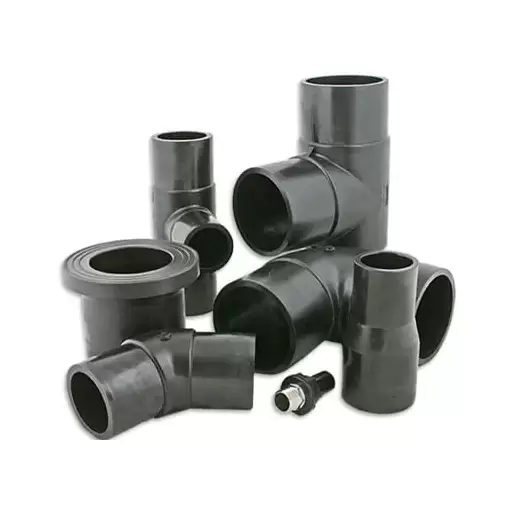
Polyethylene Fittings for Water Supply Systems
Let’s talk about some polyethylene fittings that have various applications. These are:
- Elbow Fittings: This is referred to as an elbow component; Used to change the pipeline direction at a desired angle, which is most often 45° or 90°. These are made to endure the operating pressures, usually up to 230 psi (depending on the grade of HDPE utilized), while ensuring constant flow understanding.
- Tee Fittings: Used for creating a branch line, this is crucial for systems that need side connection. Fitting or fitting insert that can be under the same pressure ratings as the pipe that it is fit. In addition, it is also dimensionally compatible with standard dimensional ratio (SDR) values.
- Reducer fitting: These fittings facilitate the transition between different-sized pipes while preserving the desired flow. HDPE reducers often specify pressure ratings and wall thickness based on the system requirements they support.
- Couplings: Designed for two pipes to fit on a coupling, enable seal between the under pressure with no loss. These fittings are made as a nonglazed fusing as designed to join with certain angular tolerances of set outward alignment.
- End caps: Commonly used for sealing the end of a specified pipe section, these caps are commonly pressure rated and often used for test the pressure tightness of a system.
These fittings have been designed to conform to the thermal expansion, tensile strength, and internal pressure of the HDPE pipes they will be used with. Exact selection varies due to pipe diameter, SDR rating, type of fluid, and operational pressure of the water supply system.
HDPE Fittings for Industrial Applications
The unparalleled performance of HDPE fittings makes them crucial for industrial use – be it mining, processing chemicals, or transporting oil and gas. No other material can beat their durability, flexibility over a range of temperatures, and extreme resistance to chemicals. While selecting fittings, factors such as chemical compatibility, pipe size, and operational temperature need to be taken into consideration.
- Pipe Diameter: The diameter should be determined along with the design of the system. Depending on the application, standard diameters range from 63mm to more than 1200mm.
- SDR (Standard Dimension Ratio) Rating: To ensure mechanical reliability, choose an SDR rating like SDR11 or SDR17 depending on the required pressure class.
- Operating Temperature: Confirm compatibility with temperatures for standard HDPE materials, which range from -40°F to 140°F.
- Chemical Resistance: Validate the incorporation of corrosive agents or specific industrial chemicals to test the fittings’ resistance.
- Pressure Rating: Establish the pressure rating with the system requirements (e.g., high-pressure pipelines, up 16 bar or greater).
- Fluid Type: Evaluate the material’s ability to transport specialized fluids such as acids, hydrocarbons, or alkalis.
Taking these considerations together with the functional demands of the industrial system will ensure that the appropriate HDPE fitting is chosen to maximize performance and life.
Selecting the Right Fitting Based on Pipe Size and Type
The first thing to look out for while choosing the correct fitting is the dimensional match between the pipe and the fitting. In HDPE systems, features such as the pipe’s outer diameter (OD), wall thickness, and the pressure rating i.e. SDR ratings) play a major role in providing accurate fit and maintaining system reliability.
Further, for the grade of pipes, whether PE80, PE100, or others, determines some other basic properties like that of chemical resistance and handling of pressure.
- Pipe Outer Diameter (OD): The OD of the pipe must fall in the range of the fitting, example (20mm to 1600mm is the range normally offered for HDPE systems).
- Pressure Rating: SDR (Standard Dimension Ratio) should match the operating pressure for example SDR11 (16 bar for PE100) or SDR17 (10 bar for PE100) relative to system requirements.
- Material Grade: The fitting must be made of the same grade of HDPE as the pipe, (example – PE100 fittings used for PE100 pipes) for chemical and physical compatibility.
Having put these technical requirements in line with operational configuration, the required fitting can now be seamlessly integrated with the pipe while meeting the desired safety and performance criteria.
How Does Electrofusion Work for Joining HDPE Pipes?
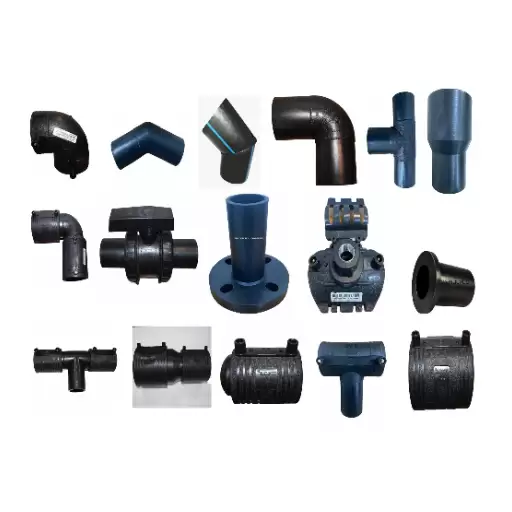
The Electrofusion Process and Required Equipment
Electrofusion is exceptional in joining HDPE pipes because it uses electrical energy to melt the joint surface of the pipes for bonding. This process is carried out in different steps that include:
- Preparation of the Pipe and Fitting: The pipe ends are cleaned by scraping them fully to remove any contamination and oxidized layers, ensuring pure surfaces to bond. This step is critical in not allowing the joint to fail.
- Alignment and Positioning: The prepared pipe ends are properly aligned to ensure no joint stresses occur during usage, then the ends are placed into the electrofusion coupler or fitting.
- Application of Electrical Current: An electrofusion machine with a pre-programmed electric current is used, introducing the current to the implanted heating coils in the fitting. The energy input, which is advanced controlled, heats the interior surface of the fitting and the exterior surface of the pipe to a melting point. When the two surfaces melt, the fitting and surface of the pipe become covered with a molten layer.
- Cooling Phase: The materials are combined and cooled under supervision to become solidified once energy input is stopped. The joint created has the same power, if not higher, than the pipe’s strength; plus, it becomes completely solidified when properly cooled without compromising the joint. Time must be monitored and allowed to cool freely.
Equipment Needed
- Electrofusion Unit: Receives and prints voltage and time precision according to the fitting specifications (usually shown by a barcode on the fitting).
- Scraping Tools: For the efficient removal of oxidation layers from the pipe surfaces.
- Clamps or Alignment Tools: These keep the pipes and fitting at the precise locations until it is time to weld them together.
- Pipe Cutters: guaranteed clean-cut, squared edging suitable for joining purposes.
By following these steps and employing the right tools, I achieved a strong, lasting joint with the desired functionality and safety for the applicable standards.
Advantages of Electrofusion Compared to Other Joining Methods
Electrofusion offers distinct benefits practically unmatched by other methods of joining, namely, accuracy, strength, and suitable applications. For starters, the electrofusion process results in very high-precision joints due to the automated heating cycles dictated by the fusion unit, which lowers the chances of mistakes being made. This accuracy provides a uniform bond strength that maintains stability even when subjected to extremely high internal pressures or harsh external conditions.
In addition, electrofusion is effective for the joining of polyethylene pipes and other thermoplastic pipes. It is also applicable in joining pipes of different wall thicknesses and eliminates the use of open flames, making it safer for use in applications where combustibility is a concern. Furthermore, the process can be done in a compact area because of the small size of the equipment and athe bsence of complicated mechanical parts.
Technically speaking, the electrofusion process is able to control the heat which is used to melt and bake the materials to a precise level between 200 degrees Celsius and 240 degrees Celcius. Ideally optimized cooling times, which are programmed based on pipe diameter and material, ensure that the fusion zone is kept at the correct level.
Finally, this method is less engineer intensive because it forms permanent, leak proof joints which greatly minimize the chances of future breakdowns occurring. With this approach, I can guarantee the most operational reliability, safety, and cost efficiency in the long run for a large number of pipe systems.
How Do I Connect HDPE Pipes to Different Pipe Materials?
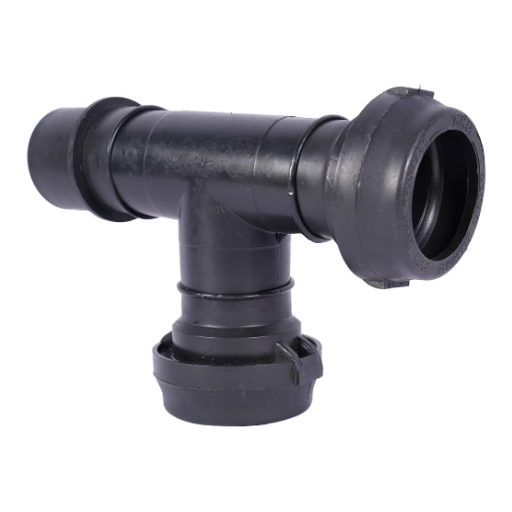
Joining HDPE to Metal Pipe Systems
Best practices are critical when joining HDPE pipes with metal systems. I take extra caution to ensure the connection is releasable, durable, and does not leak. Flanged connections are the most common options. They involve the HDPE pipe having an HDPE stub-end fitted, which then attaches to the metal pipe flange using bolts and a gasket. This method secures a solid mechanical interface between the two components.
Alternatively, flanged connections are not always possible, so threaded adapters or mechanical couplings can be used instead. Smaller pipe diameters can use threaded HDPE fitting, although proper direction and torque must be executed to avoid leak paths. For mechanical coupling, a rubber gasket must be used to ensure that no water escapes.
- Bolt Torque Specifications: The correct torque is essential when bolting during tightening as it prevents undue pressure that can cause gasket failure. Generally, these range between 45 to 125 ft-lbs, depending on your specific pipe diameter and material demands.
- Pressure Rating Compatibility: The same goes for SDR 11 and SDR 17; ensure that the HDPE and metal components being matched have the same rating.
- Thermal Expansion Considerations: Unlike metals, HDPE has a greater scope of expansion due to higher temperatures. Therefore, some degree of flexibility or allowance for expansion needs to be incorporated into the design.
- Gasket Material Compatibility: Gasket materials such as EPDM or Nitrille should be selected as they are compatible with the fluid being carried and can endure the operating temperatures and pressures.
Following these factors along with the correct procedure guarantees that the joints between HDPE pipes and the metal pipe systems are reliable and efficient.
Transition Fittings for Connecting HDPE to Other Plastic Pipe Types
To join HDPE pipes with other types of plastic pipes, I take special care to ensure that there is no discrepancy between the different materials with the help of transition fittings which seal the joints reliably. Usually, the fitting has a sealing element made of thermoplastic or elastomer that suits the HDPE and a rigid connection element which satisfies the requirements of the other plastic pipe.
- Pressure Rating Compatibility: The fitting is transition if its rating meets or exceeds the operating pressure of the piping system, which it is important not to mismatch. Otherwise, there would be a problem of leaking or suffering damage due to failure.
- Temperature Resistance: Confirm that the materials making the fittings will cope with the operational temperatures in and out of the system and for the duration of thermal cycling because these would have the highest potential for speculation.
- Chemical Resistance: The materials that would make the transition fitting would elaborate boundaries to some liquids flowable to avoid corroding or degrading to preposterous bounds.
- Mechanical Strength: Lookable features suggest that the fitting is made of compliant materials with ASTM/ISO standards which guarantee an enduring serviceability chipped under static or dynamic loads.
- Pipe Dimensional Compatibility: Ensure that the outside diameters and wall thickness of the two pipes match the design of the fitting in terms of where sealing engagement of the fitting would occur to achieve fit seal.
These considerations draw me closer to achieving lines that need not be disturbed for long due to performance and suddenly sustaining issues, all from materials or fittings that are improperly selected.
Ensuring Leak-Proof Connections Between Different Materials
For reliable seal connections between different materials, I apply careful estimation and strict observance of technical requirements relevant to the given task. Below are the key considerations and their corresponding technical requirements:
- Choose the Sealing Mechanism: I focus on sealing mechanisms fitting for the application, e.g. O-rings, gaskets, and metal seals.
- Sealing Mechanism: Different materials in the structure can have different coefficients of thermal expansion (CTE). An example connection is between steel (CTE ~12 x 10⁻⁶/°F) and polyethylene (CTE ~100 x 10⁻⁶/°F) which is require some sort of flexible seal or designed compensator because of the difference in expansion rates.
- Pressure Rating: I meet all components with the necessary pressure rating. Also, I perform hydrostatic testing according to ASME standards for pressure strength verification and control of the leaked connections.
- Corrosion Resistance: Before deciding on materials, I check if they would be attacked by the medium being transported. Doing so involves going through compatibility charts and, where suitable, consulting ASTM G31 or such for corrosion and degradation behavior.
- Mechanical Fit and Alignment: In precision manufacturing, the tolerances compliance to certain standards such as ISO 2768 or ASME Y14.5 is ensured, so proper fit is preserved while the chance of bad load transfer is mitigated.
Following these aspects and checking them against the relevant standards, it is guaranteed that every joint between different materials is robust and non leaking for the conditions it needs to function in.
What Are Common Troubleshooting Issues with HDPE Pipe Connections?
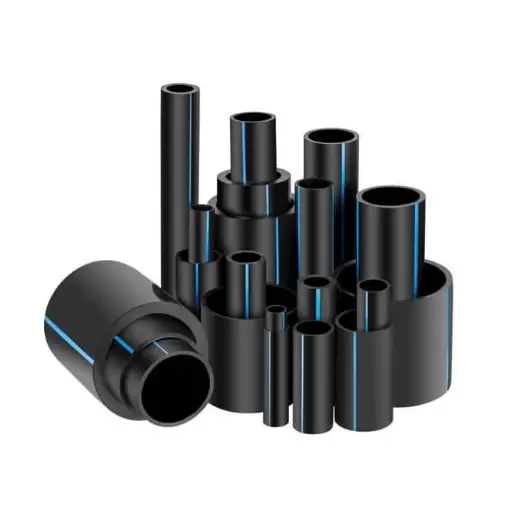
Identifying and Fixing Leaks in HDPE Pipe Connections
Leaks from HDPE pipes usually happen from poorly fused connections, damaged mechanical parts, or fitting misalignments. Assessments of this nature must be focused on seams, joints as well as mechanical stress points.
- Improper Fusion: Check fusion welds for flaws through destructive and non-destructive methods like ultrasonic testing or UT.
- Mechanical Damage: Look for external force exhibited cracks or punctures. Repairs may involve the use of heat fusion patching for minor damages, or other more significant structural compromises may require complete section replacement.
- Misaligned Fittings: Fittings must not be under stress or strain to properly align. If they are, you should rematch and remeasure the components while staying within the guidelines in ISO 9624 or ASTM F1055 for compression fittings.
Leak reoccurrence can be avoided through sufficient pipe preparation, strict alignment of the joints, and following as well the manufacturer stipulated specifications.
Addressing Alignment Problems When Joining HDPE Pipes
In order to address alignment issues caused by the joining of HDPE pipes, I focus on effective preparation and installation procedures. I ensure first that the pipes are cut with square ends. This step maximizes surface area during fusion and minimizes strain at the joints.
Now, we need to confirm the position of the pipes before commencing the fusion process. Pipes should align axially to avoid the application of shear forces. The use of clamps, pipe welders, or even hydraulic aligners can greatly enhance the accuracy of the joint, which is critical for improving diameters greater than 200mm. Even a small amount of misalignment in these sizes can result in catastrophic failure afterward.
For thermal fusion of HDPE pipes, I never stray from the recommended temperature of 400 – 450F (204 – 232C). Straying outside of these bounds will usually mean inadequate bonding, which jeopardizes the quality of the joint.
My experience with HDPE pipes has shown me that accurately calibrated tools and prescribed measurement techniques combined with compliance to the industry dictates such as along ASTM D3261 could greatly reduce, if not totally eliminate, issues concerning alignment on joints of HDPE pipes.
Reference sources
Frequently Asked Questions (FAQs)
Q: What are the main joining methods for HDPE pipes?
A: The primary HDPE pipe joining methods include butt fusion, electrofusion, socket fusion, mechanical connections, and flanged connections. Butt fusion involves heating two ends of the pipe and pressing them together, while electrofusion uses electrofusion fittings with embedded heating elements. Socket fusion joins pipes by heating and inserting the pipe into a fitting. Mechanical connections use compression fittings, and flanged connections employ bolted flanges. These techniques ensure leak-proof joints for HDPE pipe systems across various applications.
Q: How does butt fusion of HDPE pipes work?
A: Butt fusion is a common method for joining HDPE pipes, especially for larger pipe diameter installations. In this process, the two ends of the pipe are faced to ensure they’re flat and parallel, then simultaneously heated using a welding machine with a heated plate. Once the HDPE pipes are heated to the proper temperature, the heating element is removed, and the pipes are quickly pressed together with specific pressure until cooled. This creates a joint that’s as strong as the pipe itself, making it ideal for high-pressure applications. This method is particularly valued for creating a seamless connection without using special fittings.
Q: What are the benefits of electrofusion for polyethylene pipe connection?
A: Electrofusion offers several advantages for polyethylene pipe connections. This method uses electrofusion fittings with embedded wire coils that heat when electrical current is applied. The heat melts the outer surface of the pipe and the internal surface of the fitting, creating a strong molecular bond. Benefits include the ability to join pipes in confined spaces, suitability for repair work, less dependence on weather conditions, and consistent joint quality. Electrofusion is used to join pipes in situations where butt fusion equipment cannot be easily deployed and is particularly valuable for connecting two branches of the pipe in complex hdpe pipe systems.
Q: What applications of HDPE pipes require specific connection methods?
A: Applications of HDPE pipes span numerous industries, each requiring appropriate joining techniques. For potable water systems, butt fusion or electrofusion is preferred to maintain water quality. Gas distribution networks demand leak-proof joints achievable through heat fusion methods. Industrial chemical transport requires chemical-resistant connections, often using flange connection systems. Mining slurry pipelines benefit from abrasion-resistant butt fusion joints. Marine and underwater applications typically use fusion techniques that can withstand hydrostatic pressure. Agricultural irrigation systems often employ mechanical or quick-connect fittings for flexibility. Each of these various applications requires considering factors like pressure rating, environmental exposure, and maintenance requirements when selecting joining methods.
Q: How do mechanical connections differ from fusion methods for HDPE pipe and fittings?
A: Mechanical connections for HDPE pipe and fittings differ significantly from fusion methods. While fusion techniques create molecular bonds by melting the pipe material, mechanical connections physically secure pipes without melting. Mechanical fittings include compression fittings, flanged connections, and transition fittings. They’re used to join HDPE to different pipe materials for temporary connections or where fusion equipment isn’t available. These connections rely on compressive forces, gaskets, or seals to prevent leakage and can be disassembled for maintenance. However, they typically don’t achieve the same pressure ratings as fusion methods and may require more maintenance over time compared to the seamless joints created by the heat fusion of two HDPE segments.
Q: What are the HDPE pipe benefits that influence connection method selection?
A: HDPE pipe benefits greatly influence which connection method is most suitable. The material’s flexibility means connections must accommodate potential movement while maintaining integrity. Its chemical resistance makes it ideal for harsh environments, but it requires joining methods that don’t compromise this property. HDPE’s thermal expansion characteristics necessitate connections that can handle dimensional changes. The material’s long service life demands equally durable joints. HDPE’s pressure rating capabilities mean that connections must maintain system pressure integrity. Additionally, the lightweight nature of HDPE makes field installations easier but may require special considerations for pipe alignment during joining. These inherent material properties must be considered when selecting between fusion techniques, mechanical connections, or flange connection systems.
Q: How do I choose the right type of HDPE pipe for specific connection methods?
A: Selecting the right type of HDPE depends on your intended connection method and application requirements. For butt fusion, use pipes with consistent wall thickness and the same PE grade (PE4710, PE100, etc.). For electrofusion, the pipe must have a clean, oxide-free external surface of the pipe. Mechanical connections work best with higher stiffness HDPE grades that resist deformation. For flanged connections, consider pipes compatible with backing rings. Standard dimension ratio (SDR) rating affects connection choice—thicker-walled pipes (lower SDR) are better for threaded connections, while any SDR works for fusion methods. Always ensure your selected pipe meets the pressure ratings for intended applications of HDPE and verify compatibility with your chosen connection method.
Q: What equipment is needed to understand HDPE pipes’ connection methods?
A: Understanding HDPE pipe connections requires familiarity with specialized equipment. For butt fusion, you’ll need a fusion machine with facing tools, heating plate, and hydraulic clamping system. Electrofusion requires an electrofusion processor (power supply), pipe scrapers for preparing the external surface of the pipe, pipe clamps, and alignment tools. Socket fusion uses heating tools with appropriately sized sockets. For mechanical connections, you’ll need pipe cutters, chamfering tools, and wrenches. All methods require pipe-cleaning supplies and measuring tools to ensure proper fit. Temperature and humidity measurement devices help ensure that environmental conditions are suitable for fusion. This equipment varies based on pipe diameter and the specific methods used to create reliable pipe joints.
Q: What are common problems with HDPE pipe couplings, and how can they?
A: Common HDPE pipe coupling problems include improper alignment causing weak joints, contamination preventing proper bonding, insufficient heating or cooling time, and excessive fusion pressure. To avoid these issues, thoroughly clean the joining surfaces, removing all dirt and oxidation from the pipe, use proper equipment calibrated for the specific pipe size; follow the manufacturer’s temperature and pressure specifications, ensure proper alignment before fusion; allow complete cooling before stress is applied, and train operators properly. For mechanical couplings, ensure gaskets are properly seated and use the correct torque on bolts. Weather conditions can affect fusion quality, so adjust procedures accordingly. Regular inspection of joints during installation helps catch problems early.



